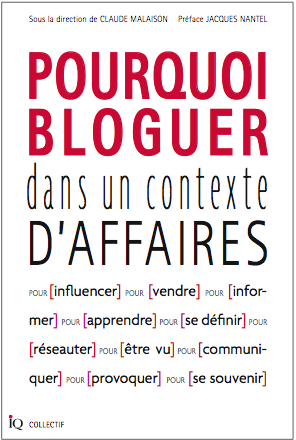Pour mémoire. Quatre types de communication pour un blogue, selon Dave.
Citation:
Here are the four ways that this can happen:
- Aggregation/Research:
This is the process of pulling together, compiling data. It's what a
reporter does. Who, what, when, where, why, how. Just the facts, ma'am.
It's research. It's hard work, a lot of digging. Example: Billmon or Kriselda
go back and find out what someone said two years ago that's still
archived in some obscure publication or cache, which proves the Bush
Administration has been lying/up to no good.
- Synthesis:
This is the process of distilling and organizing information to provide
context for understanding it better. It's what news writers and editors
do. Charts and tables are also examples of syntheses. Example: I took
the aggregated data on US incomes and produced this power chart. - Analysis:
This is the process of deconstructing the information to reveal what it
means, what it implies. It requires not only an understanding of the
information and its context, but also broad and/or deep expertise about
the related subject matter: politics, economics, history etc. It's the
domain of experts and specialists: business gurus, professors, and
lifelong students of specific domains of knowledge. Example: The New Yorker does in-depth analysis like this, while newspaper op-eds (and blog rants like this one of Rayne's) provide more cursory and subjective, but still valuable (and often entertaining as well) analysis. - Prescription: This
is the process of advising and/or persuading the reader what actions or
responses are appropriate in light of the analysis. The analyst may
conclude with a prescription that follows from the analysis, or the
appropriate action or reaction may be obvious or tacit, or the analyst
may not presume to offer a prescription, and instead leave this final
step up to the reader. Example: Here is my recent prescription for education reform.






0 commentaires:
Publier un commentaire
Les commentaires sont fermés.